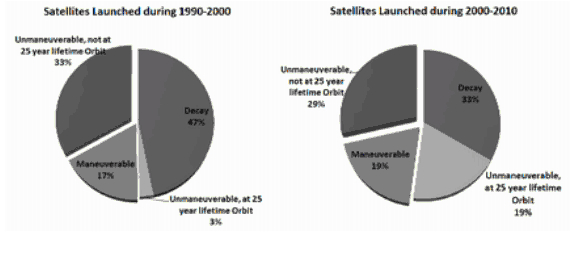Ecuador's first and only satellite, the NEE-1, collided with a Russian rocket fragment last week, reigniting the debate over the need for an international organization that would monitor space debris and find those who ignored international norms liable for costs.
It wasn't immediately clear if the nano-satellite called the Pegasus was damaged. The Ecuadorean space agency director, Ronnie Nader, tweeted on Wednesday that the satellite remained in orbit: "Ecuador still has its satellite; the people still have Pegasus."
It was the third satellite to be hit by space debris in last 15 years. While far from the public eye, space debris has become the greatest threat to satellites. The world relies on these floating tech labs to bring us communication signals, navigation tools, weather warnings and a host of other benefits that have become so commonplace we rarely consider them anymore.
International efforts to deal with the problem of space debris have resulted in the establishment of the Inter-Agency Space Debris Coordination Committee (IADC). The committee has worked to develop a set of international space debris mitigation guidelines, which were published in October 2002 and adopted by many countries, including United States.
The guidelines have helped to reduce some types of space debris, but there is no way to enforce compliance. When it is deemed politically or financially too costly to execute the guidelines, they are typically ignored. For example, a 2007 Chinese missile test created more than 3,000 traceable fragments of metal floating into space -- almost double the collision risk for satellites in low-earth orbit (LEO).
The poorly implemented end-of-life disposal of satellites is not widely reported. But the process is extremely important in the long term. According to the IADC guidelines, satellites in LEO should be maneuvered into an orbit with a 25-year lifespan. If satellites are not removed from orbit, they eventually collide with one another and generate these dangerous fragments.
However, many satellites, including the Ecuadorean Pegasus, don't have this maneuvering capability. Even if satellites did have the capacity to dispose of themselves, some operators would bypass this mode to save money. Operators can easily find legitimate reasons for not disposing of their satellites -- and it is difficult for governments to challenge them.
Not surprisingly, the end-of-life disposal of satellites is badly managed. The figures below show satellites launched between 1990-2000 and 2000-2010. After the 2002 IADC guidelines were implemented, the category "unmaneuverable, not at 25-year-lifetime orbit" -- or satellites that are not following the IADC guidelines -- only drops from 33 percent to 29 percent.

Establishing a liability mechanism for on-orbit collisions could be the most effective way to prompt the IADC guidelines. If satellite operators were forced to pay for the problems caused by their dead satellites, it might create financial incentives to adopt the guidelines.
The 1967 Outer Space Treaty and the 1972 Liability Convention do provide a fault-based liability scheme. But there is no clear definition of fault. In the 2008 Iridium33-Kosmos collision, in which both satellites were destroyed, the Russian Space Agency argued that there was no international law requiring it to de-orbit its dysfunctional satellite, which had been out of service for more than a decade. Iridium Communications Inc. -- a McLean, Va., company that operates a constellation of communications satellites -- argued that it had no obligation to take collision-avoidance measures. NASA estimated that the collision created some 1,000 pieces of debris.
Even in those cases where the fault seemed clear, implementing the treaties is still difficult. For example, if a fragment from a Chinese missile test collides with a U.S. satellite, the consensus is China has the fault. But the problem remains how to ascertain the fragment belongs to China. It is difficult to prove with high probability that the given fragment was created by the missile test, yet easy to create hypothetical data to show it came from another breakup. Although the United States has already provided the source of each space object in its space-track catalog, it's hard to use this database as proof in assigning liability because it's painted as a biased source.
To solve the liability problem, one solution is to establish an international organization that collects space surveillance data from space-faring countries. Experts from different countries can then determine the attribution of space debris before a collision happens, eliminating the incentive to create phony proof to the opposite. The organization should set standards and suggestion actions to avoid potential collisions. If the satellite operators fail to implement these globally recognized standards, then they would be liable for any losses.
While collisions in space are still rare, collision-avoidance maneuvers have become routine for satellite operators. There were 126 such maneuvers in 2010. The organization could establish a mechanism in which a country or company that refuses to undertake collision-avoidance measures would be forced to compensate satellite owners whose units are damaged or destroyed.
All in all, if all space-faring countries were willing to share data and establish institutions to solve disputes, it would be easy to determine the liability of on-orbit collisions. The space debris problem could then be handled by free-market mechanisms instead of ineffective governmental mandates.
As a global leader and the country that has nearly the same amount of satellites as other countries combined, the United States should take the initiative to cooperate with other countries and establish this international organization to mandate liability for on-orbit collisions.